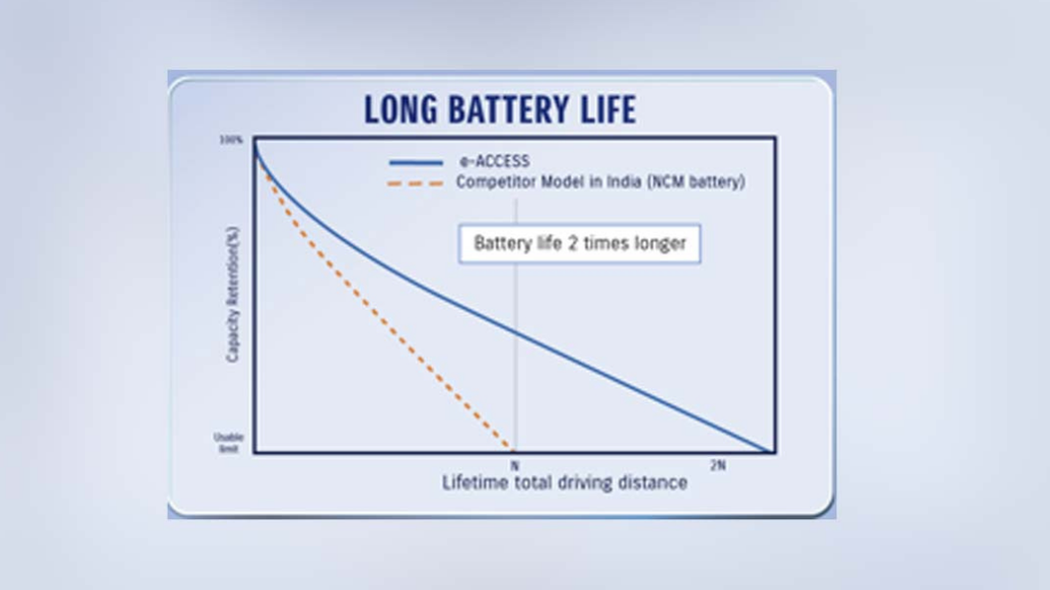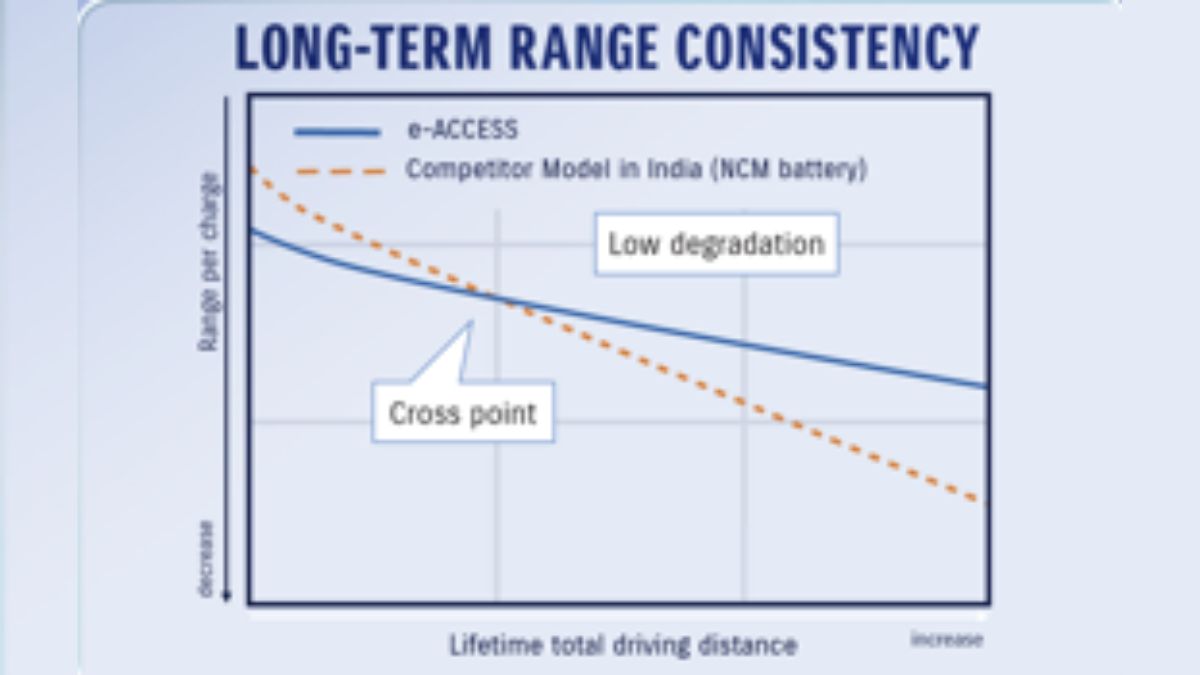- By Kanika Sachdeva
- Fri, 12 Sep 2025 06:05 PM (IST)
- Source:JND
Electric two-wheelers are now a common sight on Indian streets. With increasing adoption, the queries the common man is raising have also changed. From the earlier question of, "How far can I travel on a single charge?" The larger question now is, "How long will my battery last?"
And that is an important question because the battery is not just another component of your scooter — it's its heart.
There are two primary types of batteries used in most electric scooters currently: Nickel Manganese Cobalt (NMC) and Lithium Iron Phosphate (LFP). Each has its own advantages and trade-offs. But more and more manufacturers are turning to LFP for one simple reason: long-term reliability.
Suzuki Motorcycle India has already set an example, launching its first electric scooter, Suzuki e-ACCESS, with LFP technology. Let's see why that's such a big deal.
What Makes an LFP Battery Different?
The Lithium Iron Phosphate (LFP) battery is a good choice for daily commuting because it provides a number of significant advantages.
- Longer Cycle Life: LFP batteries can last two to three times longer than NMC batteries.
- Greater Thermal Stability: They handle heat better and are less prone to issues like overheating.
- Durability Over Time: LFP batteries are perfect for riders who prefer durability above high peak range figures because they retain performance over a longer period of time despite being slightly heavier and less energy-dense than NMC batteries.
Long Battery Life Simulation

(This graph shows how the capacity of LFP and NMC batteries decreases over time.)
Over a longer period of time or over more charging cycles, the solid blue line, which represents the LFP battery (used in the Suzuki e-ACCESS), exhibits slower and more consistent capacity decline. The typical NMC battery's dotted line, on the other hand, shows a sharper decline, suggesting that its capacity decreases more rapidly as the number of charging cycles rises.
What does this signify for the customer?
Compared to an NMC battery, an LFP battery is going to have up to twice the useable life and twice as many charging cycles. For the rider, this means fewer replacements, reduced long-term expenses, and more peace of mind.
Long Term Range Simulation

An NMC battery is represented by the red dotted line, which has a greater range at first but declines more quickly as driving distance grows. In contrast, the Suzuki e-ACCESS's solid blue line, which represents the LFP battery, has a somewhat shorter initial range but gradually gets more steady and reliable.
For example, at first, a scooter with an NMC battery would have a little greater range than one with an LFP battery The range provided by the LFP battery, however, equals that of the NMC battery after a specific amount of time (for example, 1.5 years, assuming daily usage of about 80 km). LFP maintains the same range after this, providing a definite benefit over time.
In summary, if battery degradation is not taken into account, initial range estimates may be deceptive. LFP's slower lifetime degradation guarantees that the range you start with is the range you maintain for many years, even though NMC may initially show better figures.
Use in the Real World: Pay Attention to Usability, Not Just Peak Range
Although range is frequently a crucial comparing factor, it's not the only one that counts. Some manufacturers are concentrating on improving real-world performance rather than just aiming for better range figures since they understand that the majority of daily journeys in India are brief and regular. For instance, Suzuki used this strategy in the e-ACCESS:
Based on usage data, the average Indian rider travels approximately 30 km per day, indicating most riders can go up to three days between charges. It has a real-world range of 95 km on a 3.1 kWh battery.
This approach keeps the scooter's maneuverability and lightweight without compromising performance.
Built for Durability and Confidence
While battery chemistry is vital, testing and protection are just as important. The battery in scooters, especially the Suzuki e-ACCESS, is contained in a robust aluminum casing that is incorporated into the frame of the scooter. This makes it safer from fire-related mishaps and less susceptible to physical harm.
To make sure they can survive real-world riding circumstances, every e-ACCESS scooter and battery is also put through rigorous testing procedures, such as vibration, submersion, motor bench, crush, and puncture tests, as well as extreme heat and cold drop tests.
Verdict
It's important to pick an electric scooter that will support you over the long term rather than merely focusing on specs. Suzuki is creating EVs that are robust, dependable, and useful for Indian highways and urban commuting requirements by integrating LFP battery technology. It’s not just electric mobility. It’s electric mobility designed to last long!
(Disclaimer: This article is written by Brand Desk. User discretion is advised)

-1757680067663_v.webp)